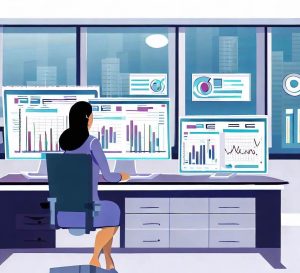Microsoft Excel
A Data Analyst is equipped with a suite of specialized tools that enable them to efficiently dissect, interpret, and present data. Central to their toolkit is spreadsheet software, with Microsoft Excel being a prime example, which allows for straightforward data manipulation, computation, and preliminary visualization. It's a versatile platform where raw data can be organized, filtered, and interpreted at a fundamental level.
Statistical software
On a more advanced scale, statistical software such as SPSS or R becomes invaluable. These platforms cater to a deeper, more intricate analysis, enabling analysts to run complex statistical tests, predictive modeling, and more. Such software not only processes data but also aids in drawing meaningful inferences from vast datasets.
Data visualisation
To convey their findings in a compelling manner, Data Analysts often turn to data visualization tools. One standout in this category is Tableau, which transforms multifaceted data patterns into clear, engaging, and interactive visual narratives, making complex insights more digestible for stakeholders.
Database management
Moreover, as the world of data grows ever more complex, having a handle on database management becomes crucial. This is where proficiency in SQL (Structured Query Language) comes into play. SQL allows analysts to retrieve, manipulate, and manage data stored in relational databases efficiently.
Programming skills
Additionally, programming skills, especially in languages like Python, elevate a Data Analyst's capabilities. Python, with its rich library ecosystem, offers tools for everything from data cleaning and analysis to machine learning, making it an indispensable resource for any analyst aiming to deliver comprehensive and cutting-edge data solutions.






